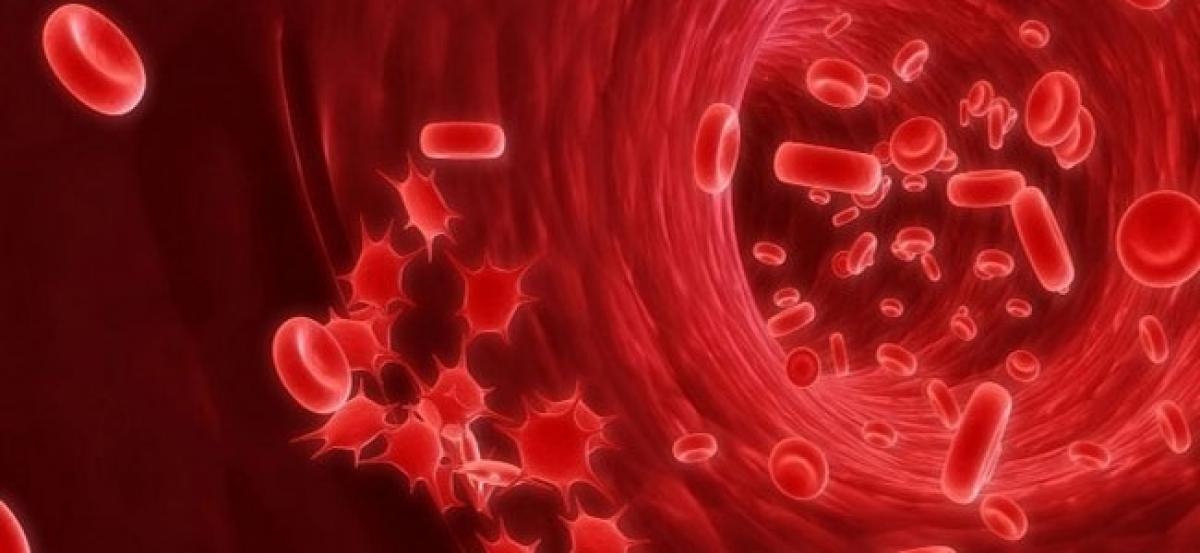Live
- YSRCP leaders file police complaint for abusive posts against Jagan
- Direct tax mop-up may shoot over FY25 target
- Massive Theft at Local Councillor's House in Shankerpally
- 10 killed, 25 injured in Israeli airstrike on Beirut
- Ram Gopal Varma seeks time for police investigation in a case over social media remarks
- NMC to adopt ITMS for traffic control
- Beware of WhatsApp Wedding Scams: How to Protect Your Bank Account
- Manhattan Stabbing Spree Leaves 3 Dead; Suspect Ramon Rivera Arrested After Violent Rampage
- Samanta receives FIVB Grand Cross Award
- Australia vs India women: Harmanpreet Kaur to lead 16-member squad; Shafali Varma, Shreyanka Patil dropped; Harleen Deol, Richa Ghosh included
Just In

Scientists have discovered a new biomarker that could help to unlock the medical mystery behind an untreatable blood cancer.
New Delhi: Scientists have discovered a new biomarker that could help to unlock the medical mystery behind an untreatable blood cancer.
QIMR Berghofer Medical Research Institute's Immunology in Cancer and Infection senior scientist Professor Mark Smyth and clinician researcher Dr Kyohei Nakamura worked with colleagues in France to make the discovery about multiple myeloma.
Multiple myeloma grows in the bone marrow. The study found a particular molecule called IL-18 suppressed the immune system to help create a bone marrow environment where the cancer was more likely to grow.
The study analysed the impact of IL-18 on 152 patients with multiple myeloma and found strong evidence that high levels of the molecule were associated with poorer survival.
Professor Smyth said IL-18 was responsible for promoting the immune suppressive function of a particular kind of white blood cell (granulocyte) in the bone marrow.
He said the resulting suppression hindered another kind of immune cell, known as a T cell, from doing its job of finding and destroying cancer cells.
"IL-18 has traditionally been recognised as a growth factor for immune cells because it was thought to promote the activity of the white blood or 'natural killer' cells that protect us from infection and cancer," he said.
"We've turned that thinking on its head with our discovery that IL-18 is actually a pro-tumour factor, which causes virtually the opposite effect.
"IL-18 is critical in the progression of multiple myeloma by enabling one part of the immune system to suppress another."
Professor Smyth said bone marrow IL-18 levels were a potential biomarker for predicting a person's disease prognosis as well as a potential target for new multiple myeloma treatments.
"Our research shows IL-18 could be an independent prognostic factor, which is very significant," he said.
"Practically speaking, the higher a person's IL-18 levels in the bone marrow, the greater the likelihood their immune system is suppressed. That means their prognosis is not as good."
Dr Nakamura said the findings could one day influence the way patients were treated for multiple myeloma.
"If a person's prognosis is not as good because they have higher levels of IL-18 in the bone marrow, a doctor might choose to treat the patient more aggressively," he said.
Dr Nakamura said the discovery was vital to building a better understanding of what caused inflammation in the bone marrow that leads to the development of multiple myeloma.
"Multiple myeloma creates a really inflammatory microenvironment inside the bone marrow," he said.
"We want to understand the molecular processes underpinning that inflammation.
"This will help us to determine whether this biology is unique to the bone marrow and multiple myeloma, or whether it is also present in other cancers."
Dr Nakamura said there was even potential to one day work with pharmaceutical partners interested in targeting IL-18 with a unique antibody or small molecule inhibitors.
He said a test for IL-18 in the bone marrow of patients would need to be performed at the point of diagnosis by taking a fluid sample from inside the bones.
The QIMR Berghofer-led research involved multiple collaborators from across the globe and within Australia.
It was published in Cancer Cell.

© 2024 Hyderabad Media House Limited/The Hans India. All rights reserved. Powered by hocalwire.com







